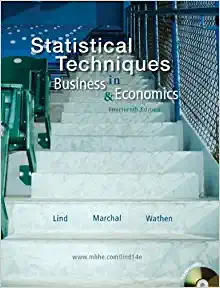Question
Need a response to this discussion please, In your responses , comment on at least two posts from your peers by providing examples from the
Need a response to this discussion please,
In yourresponses, comment on at least two posts from your peers by providing examples from the news of monopolies and firms in monopolistic competition markets. Compare and contrast the two types of markets.
The simulation had participation in a single market, a mixed market, and markets with price discrimination. In each market, it was most profitable to have the marginal cost be equal to the marginal revenue, as this allowed for a markup price to be profitable with the amount of demand. This is because of the demand curving downward for a firm with a monopoly.
Monopolies create different inefficiencies within a market. "Because a monopoly charges a price above marginal cost, not all consumers who value the good at more than its cost buy it. Thus, the quantity produced and sold by a monopoly is below the socially efficient level." (Mankiw, 2021) This creates a dead weight loss, as the price is set higher than the marginal cost of production, and the social demand for the product is not fulfilled at the set price. This lower amount of production is below the amount that would maximize market surplus.
Monopolistic competition has inefficiencies as well. One of these is the markup of price over the marginal cost, just like in a monopoly. This means that a monopolistic competition has the same dead weight loss as a monopoly. Because customers get surplus from the introduction of a new product and firms lose both profits and customers when there is new competition, there are both positive and negative externalities. This can mean there are either too many or too few firms participating in the market, depending on which of the two externalties are larger. This creates inefficiency within the monopolistic competition (Mankiw, 2021)
Both monopolies and monopolistic competitive firms are profitable. "The market demand curve describes the combinations of price and quantity that are available to a monopoly firm. By adjusting the quantity produced (or equivalently, the price charged), the monopolist can choose any point on the demand curve, but it cannot choose a point off the demand curve." (Mankiw, 2021) So to maximize profit in either a monopoly or monopolistic competitive firm, they would choose "the quantity at which marginal revenue equals marginal cost, then use the demand curve to find the price that will induce consumers to buy that quantity." (Mankiw, 2021) They will make profit as long as the price for the good is above the average total cost. There is a difference for the two types of firms as well. As Mankiw states, "Because a monopoly is the sole seller of a product without close substitutes, it can earn positive economic profit, even in the long run. By contrast, because monopolistically competitive markets have free entry, the economic profit of a firm in this type of market is driven to zero in the long run." (2021)
Step by Step Solution
There are 3 Steps involved in it
Step: 1

Get Instant Access to Expert-Tailored Solutions
See step-by-step solutions with expert insights and AI powered tools for academic success
Step: 2

Step: 3

Ace Your Homework with AI
Get the answers you need in no time with our AI-driven, step-by-step assistance
Get Started


